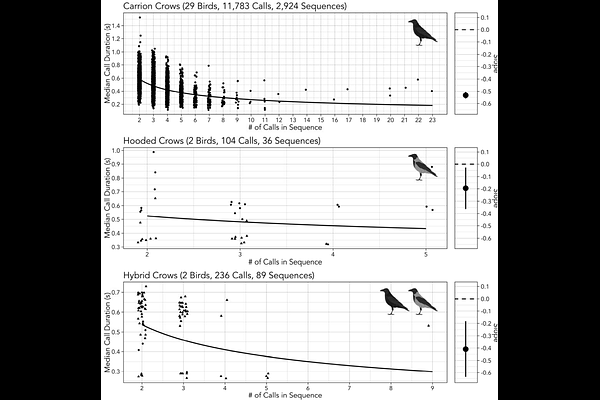Vocal efficiency in crows

Vocal efficiency in crows
Wascher, C. A. F.; Youngblood, M.
AbstractMany communicative systems have been selected for efficiency, shaped by the trade-off between information transmission and energetic or temporal constraints. Linguistic laws such as Menzerath\'s law -predicting shorter elements in longer sequences -have emerged as widespread principles across vocal communication in many species. While these laws have been predominantly studied at the species level, the influence of individual and social factors remain underexplored. In this study, we investigated adherence to Menzerath\'s law in the vocal communication of carrion crows, Corvus corone corone, hooded crows, Corvus corone cornix and hybrids. Our findings show that crow call sequences adhere to Menzerath\'s law, with shorter calls occurring in longer sequences, demonstrating structural efficiency in vocal communication. In carrion crows specifically, we analysed call sequences in relation to individual characteristics (sex, age) and social variables (group size, dominance status, strength of affiliative relationships). Interestingly, adherence to Menzerath\'s law was stronger in males and younger individuals, while no effects were found for group size, dominance, or affiliative relationships. This study provides the first evidence of Menzerath\'s law in corvid vocal communication and suggests that individual-level traits, rather than broader social dynamics, may shape vocal efficiency. These findings broaden our understanding of widespread principles in animal communication and raise new questions about the ontogeny and flexibility of vocal efficiency in complex social species.